
Update #1
Date: September 1, 2020 ODO: 3165km Km driven: N/A Fuel consumption: 16kWh/100km
Make no mistake: electric cars will dominate Australian roads in years to come. But they sure are taking their time to become commonplace.
It’s not the manufacturers’ fault that take-up has been so slow – they’re pumping out more electric-powered cars than ever.
But the snail’s pace at which Australia has been willing to dip its toe into the technology has had knock-on effects for an industry that is ready and willing to come Down Under.

Plenty of people know about electric cars now, but the hands-on experience for the general public hasn’t come as easily it has in other markets overseas.
You’d think as automotive writers we’d be all over the latest tech, but even I have only had brief jaunts in electric vehicles. A couple of runs here and there in some Teslas, a comparison or two of some of the front-runners is about the extent of my hands-on experience with electric power.
So it’s about time you and I both learned what it’s like to live with an electric car. I’ve picked up a Nissan Leaf that’ll grace the driveway – or maybe even the office carpark if Covid ever lets us return – until the end of 2020.

It’s the second-generation Leaf which was launched mid-2019 and is priced at $49,990 before on-road costs.
It’s a big ask for a small Nissan hatch, but let’s not forget it is an electric car, and Nissan has thrown in some add-ons to help ease the pain.
The Leaf only comes in the one specification which is simply called the Leaf 40kWh. Its electric motor sends 110kW/320Nm to the front wheels courtesy of the charge drawn from the 40kWh battery and Nissan says it provides a 270km range.

That range puts it ahead of rivals like the Hyundai Ioniq Electric and Mini Cooper SE which both run roughly 230km on a charge, but I’m really keen to see if Nissan’s figure holds true.
I have the ability to charge it at home, though a quick Google search has revealed a type 2 charger is only a kilometre from my place.
That will mean a shorter 7.5-hour charge to full capacity, rather than a 24-hour one as drawn from a standard 240V home power outlet.
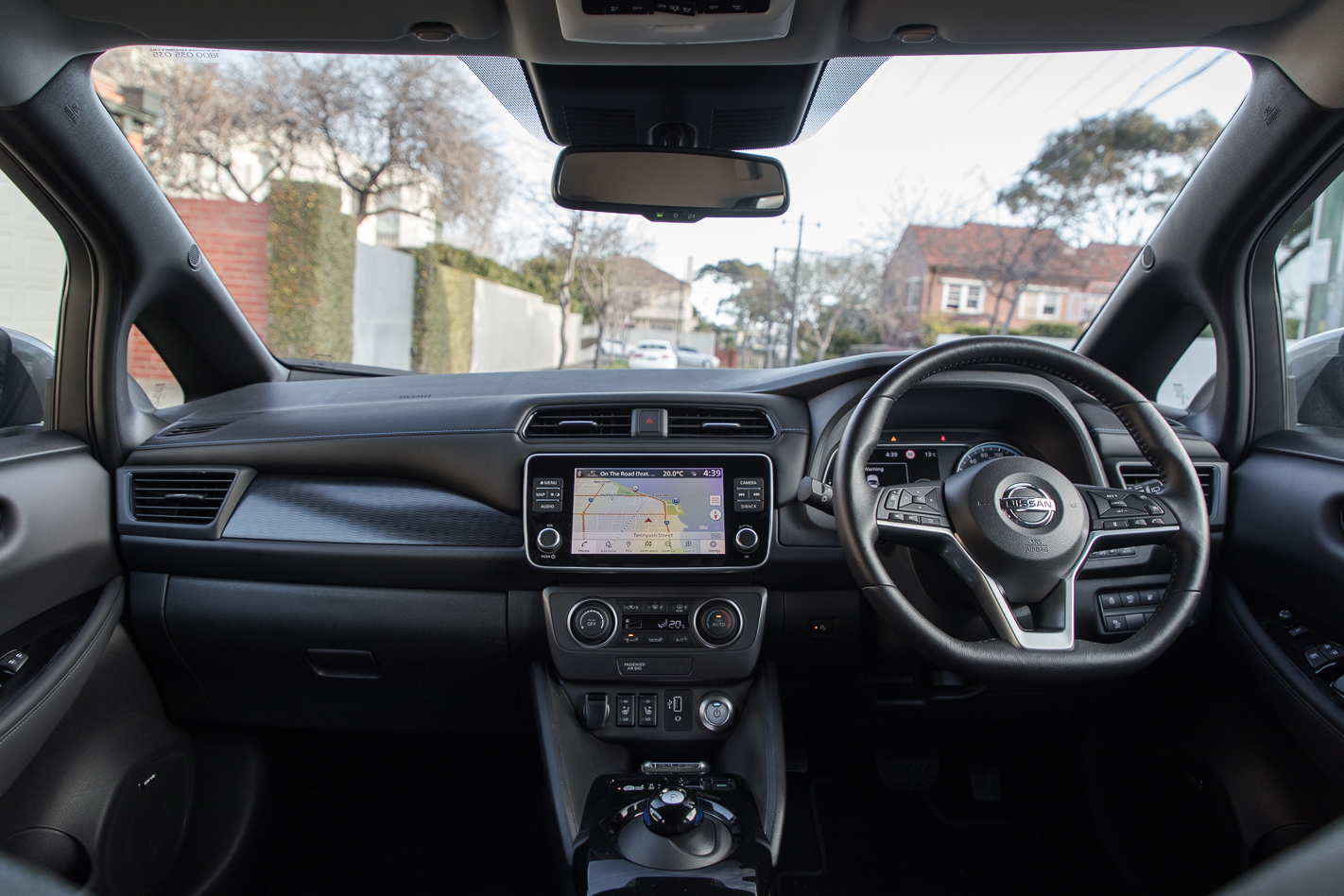
Standard equipment includes LED headlights, heated front and rear seats, privacy glass, power folding mirrors, Android Auto and Apple CarPlay connectivity, satellite navigation, heated steering wheel, adaptive cruise control and a 360-degree parking camera.
The Leaf battery gets an eight-year/160,000km warranty, while the rest of the car gets a five-year unlimited kilometre warranty.
Nissan has thrown its suite of Propilot semi-autonomous safety tech at the Leaf which includes autonomous emergency braking, lane-keep assist, blind-spot monitoring, rear cross-traffic alert and as mentioned, a 360-degree camera and active cruise control.
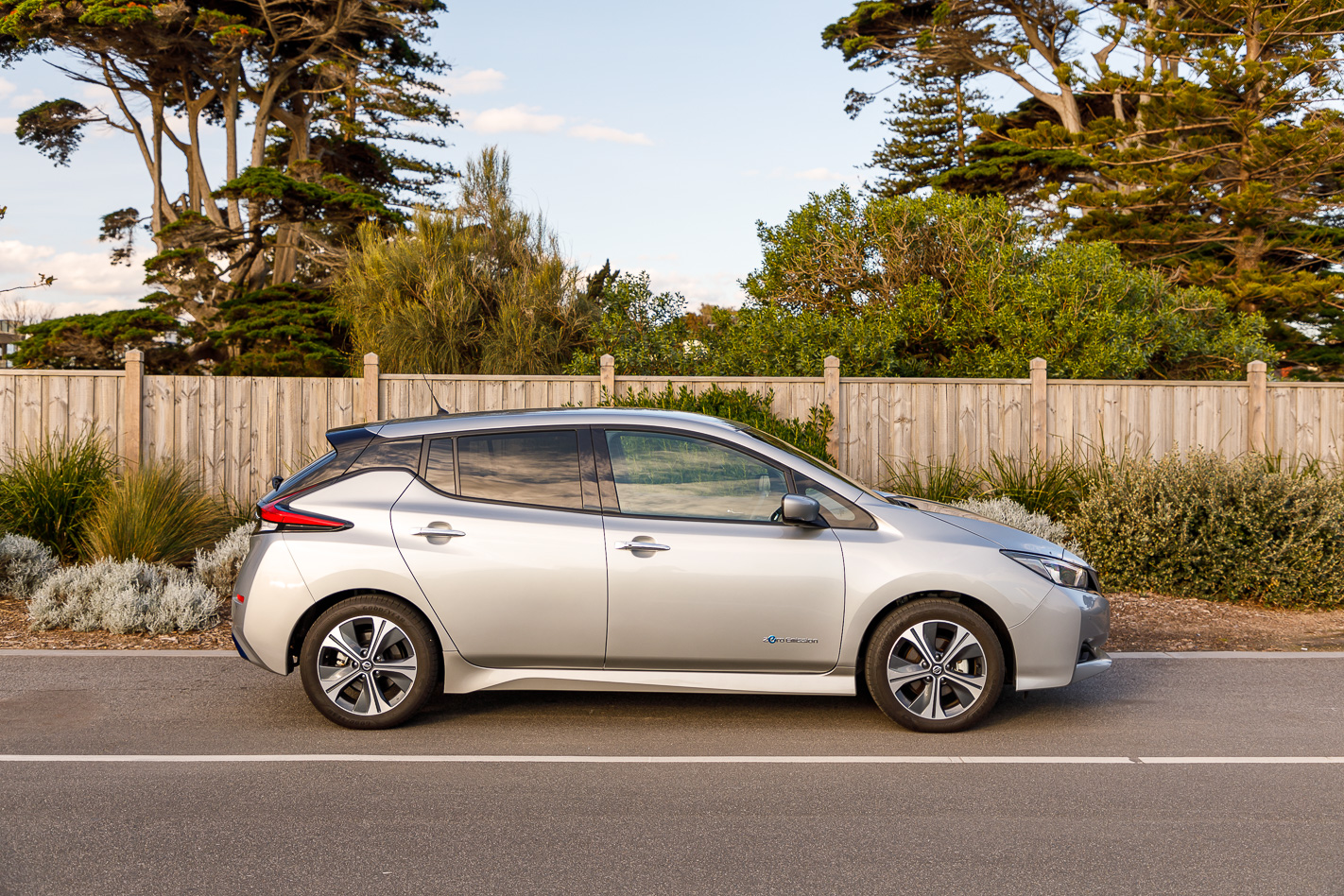
Our car is finished in platinum metallic ($950) and sadly misses out on the cool two-tone black roof which costs an extra $990.
There remains an elephant in the room – I’ve only just taken delivery of the Leaf and I’m in lockdown-stricken Melbourne. For the time being, trips are only going to be local and uneventful, but hopefully, as Melbourne pulls itself out of a rut, I’ll be able to venture further.
That said, I’m pretty excited to give it a go over the next few months. I’m particularly interested in learning more about charging infrastructure and whether the Leaf can supplant an internal combustion-engined car in my life.
Update #2
Date: October 1, 2020 ODO: 3513km Driven: 348km Fuel consumption: 16.1kWh/100km
I’ve only just tallied it up now but it seems as though our Nissan Leaf long-termer has only travelled a measly 350km since we took delivery. An unfortunate reality and byproduct of living in Melbourne under our second lockdown.
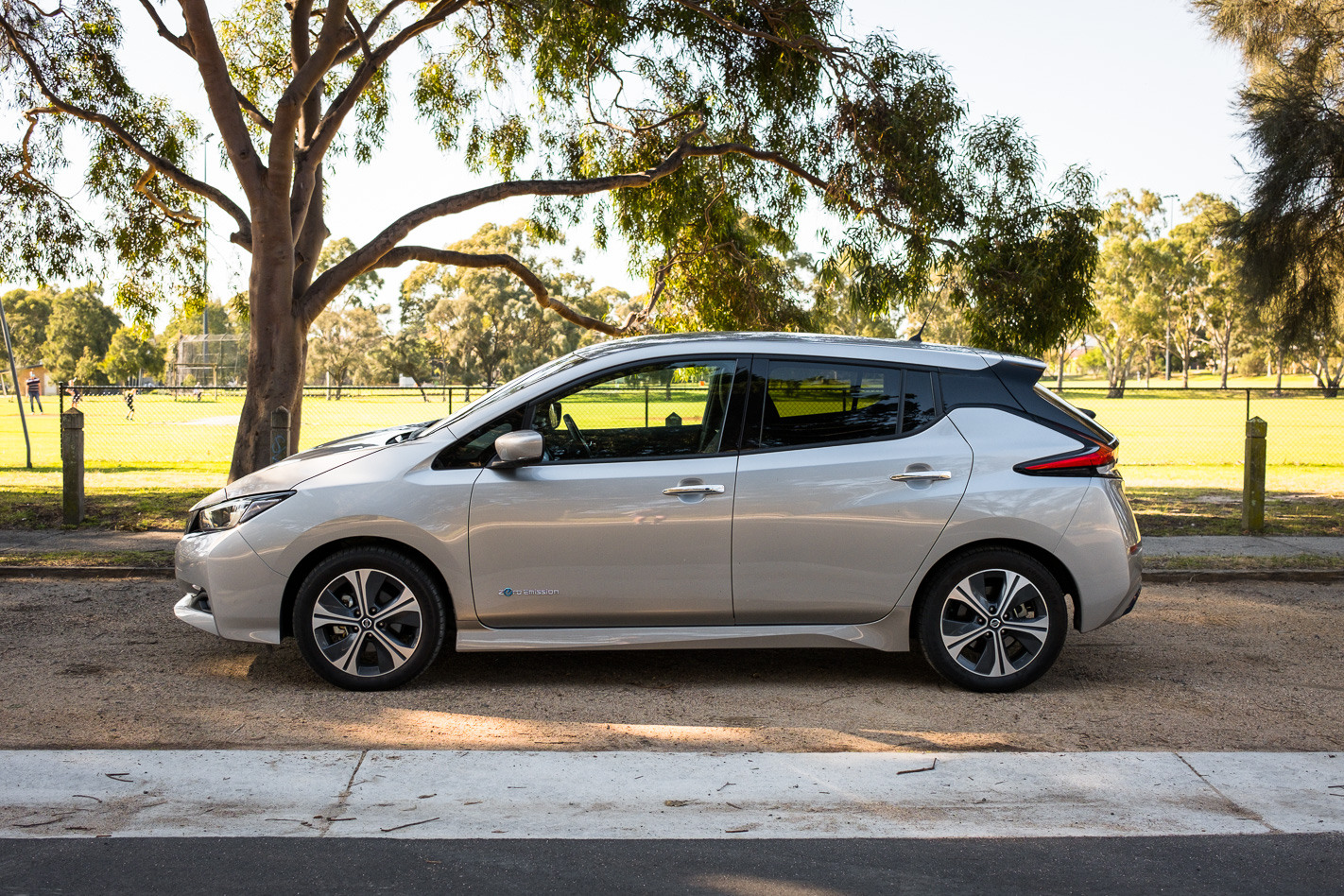
That said, I’ve at least enjoyed a little bit of time running errands in the Leaf so far.
The prospect of owning an EV was and still is exciting, but I’d be lying if I didn’t mention the fact that once you get over the initial electric hype, it really does just feel like any other car.
Apart from the fact that you have to charge it rather than fill it with petrol, the Leaf is blending in nicely as a daily driver. That’s a good thing, and will bode well for the sceptics out there still afraid of embracing electric power.
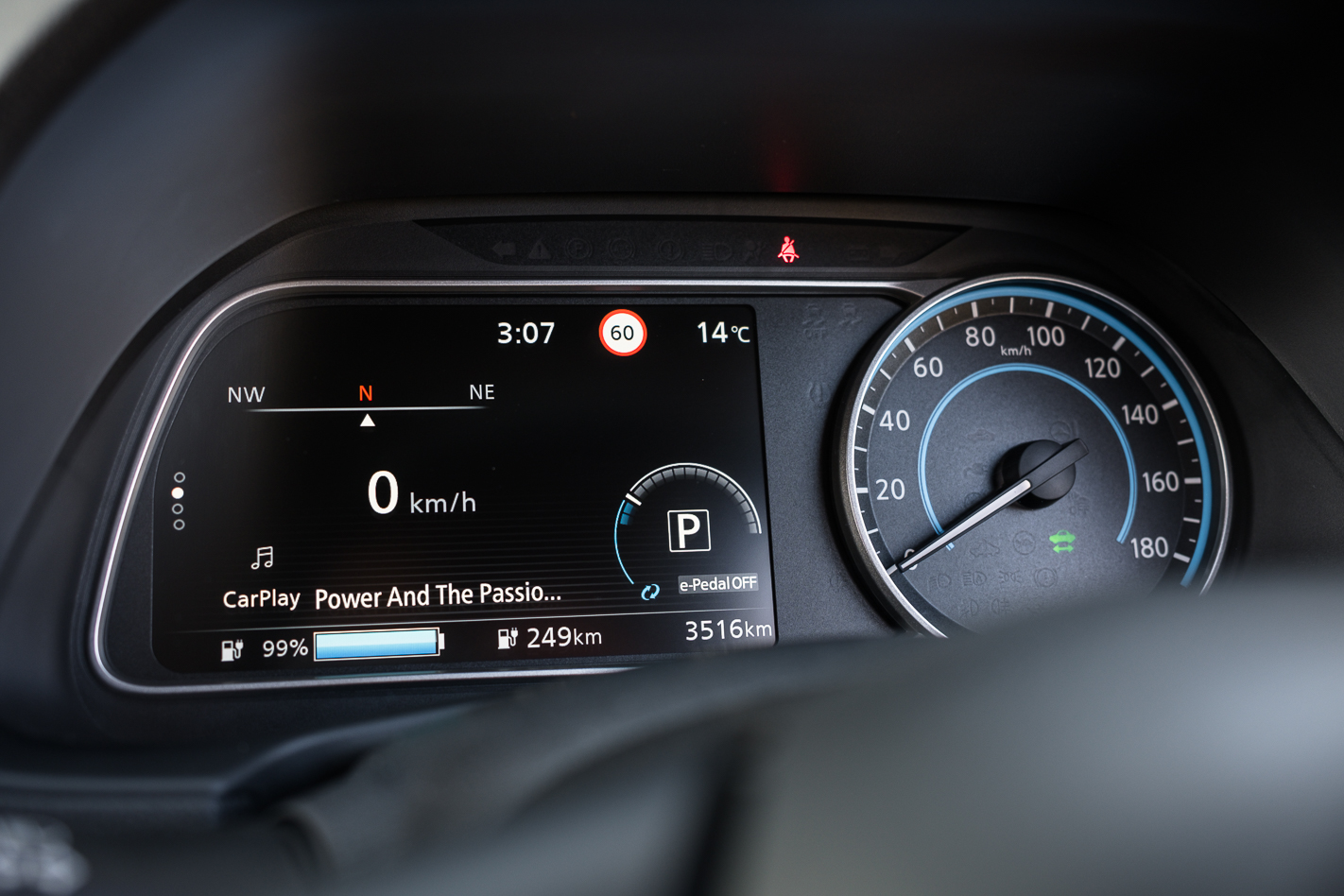
Speaking of electric power, I’ve charged it twice this month and it’s taken less time than prescribed. The Leaf has only been plugged into a 240V home outlet so far and each time has taken roughly 17 hours rather than the quoted 24 hours.
On each occasion, I’ve made it about 180km between charges before it got to around 10 percent remaining. That’s a little less than the projected 270km range, though I’ve been running it with air conditioning and without regenerative braking.
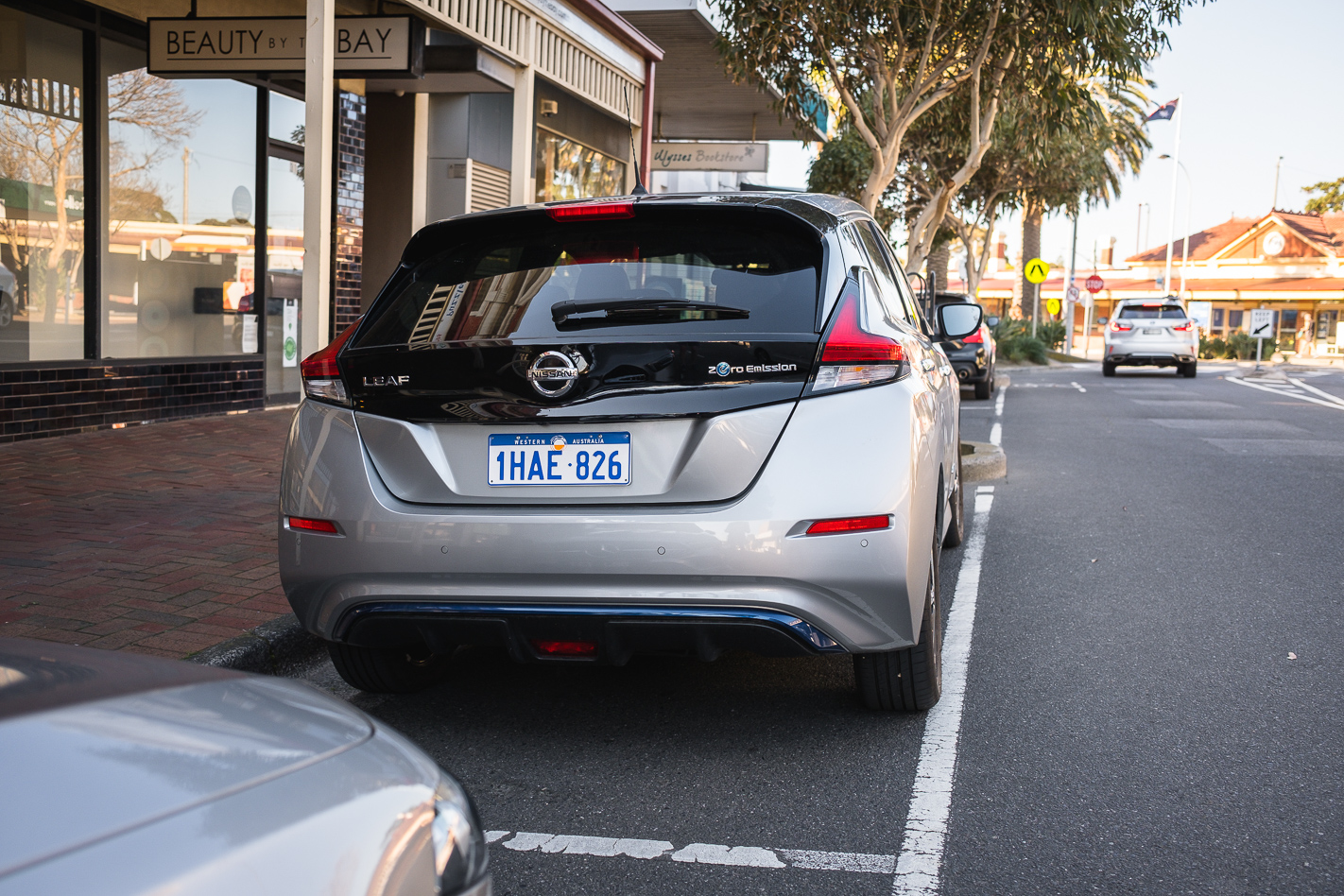
I’m planning on venturing further this month to plug it into a type 2 charger, which is said to bring the charging time down to around six hours.
One novel factor of the Leaf is the ease with which you can just jump in and go. It’s handy not having to be gentle or warm up an engine – all you need is a quick toggle to put the car into D and you’re away. The zippy power delivery is enjoyable around the suburbs and does an impressive job of hiding the Leaf’s 1594kg weight, but that does come into focus when rounding corners.
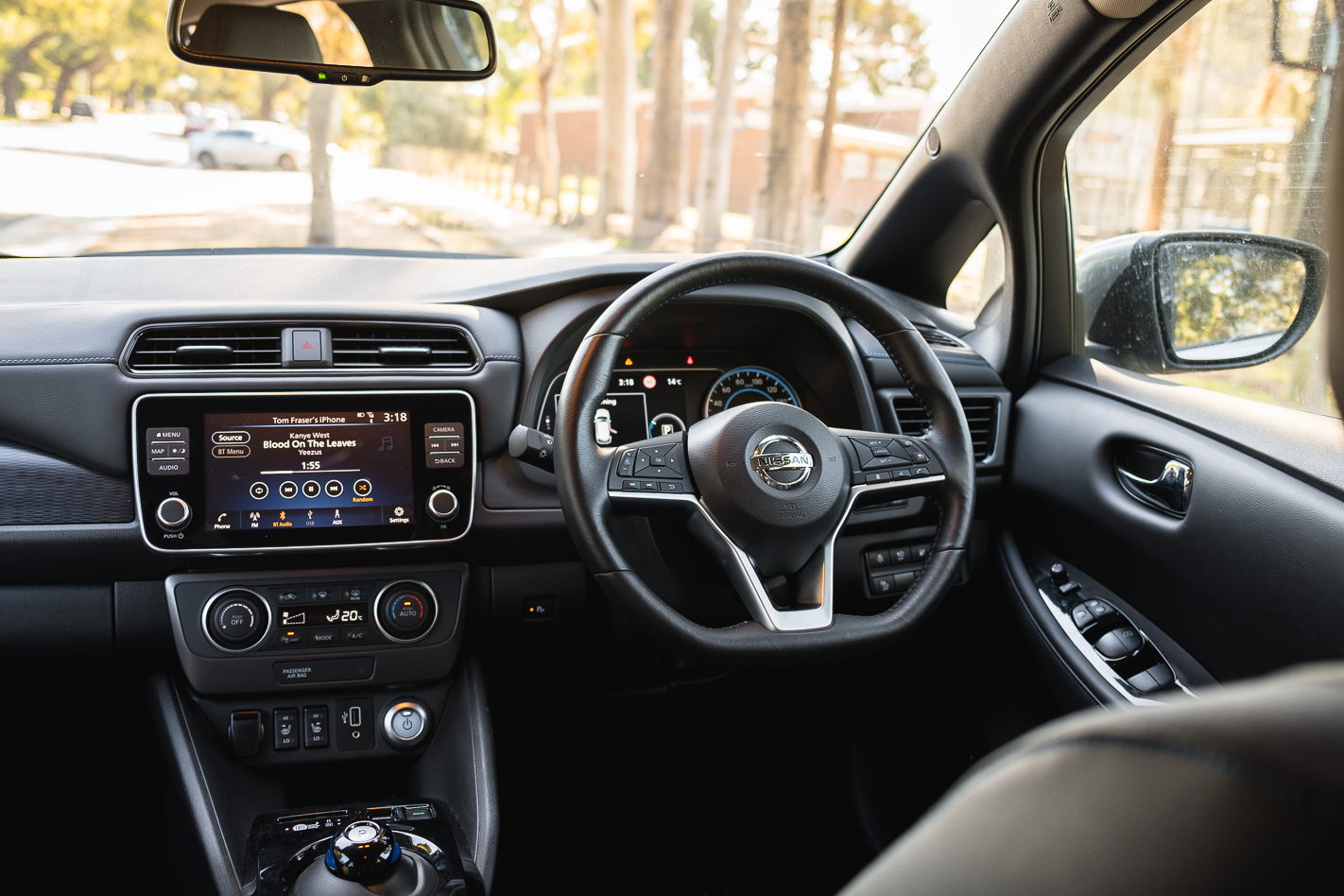
The interior is a perfectly functional and nice place to be, but is slightly dulled by the use of hard plastics in certain areas. In my mind, you’re already paying a premium price for an electric vehicle so the manufacturer should make it a slightly more premium product inside.
My six-foot-four-inch frame is well catered for in the front row in terms of roominess, but there are some ergonomic issues caused by a high seating position and lack of reach adjustability for the steering wheel.
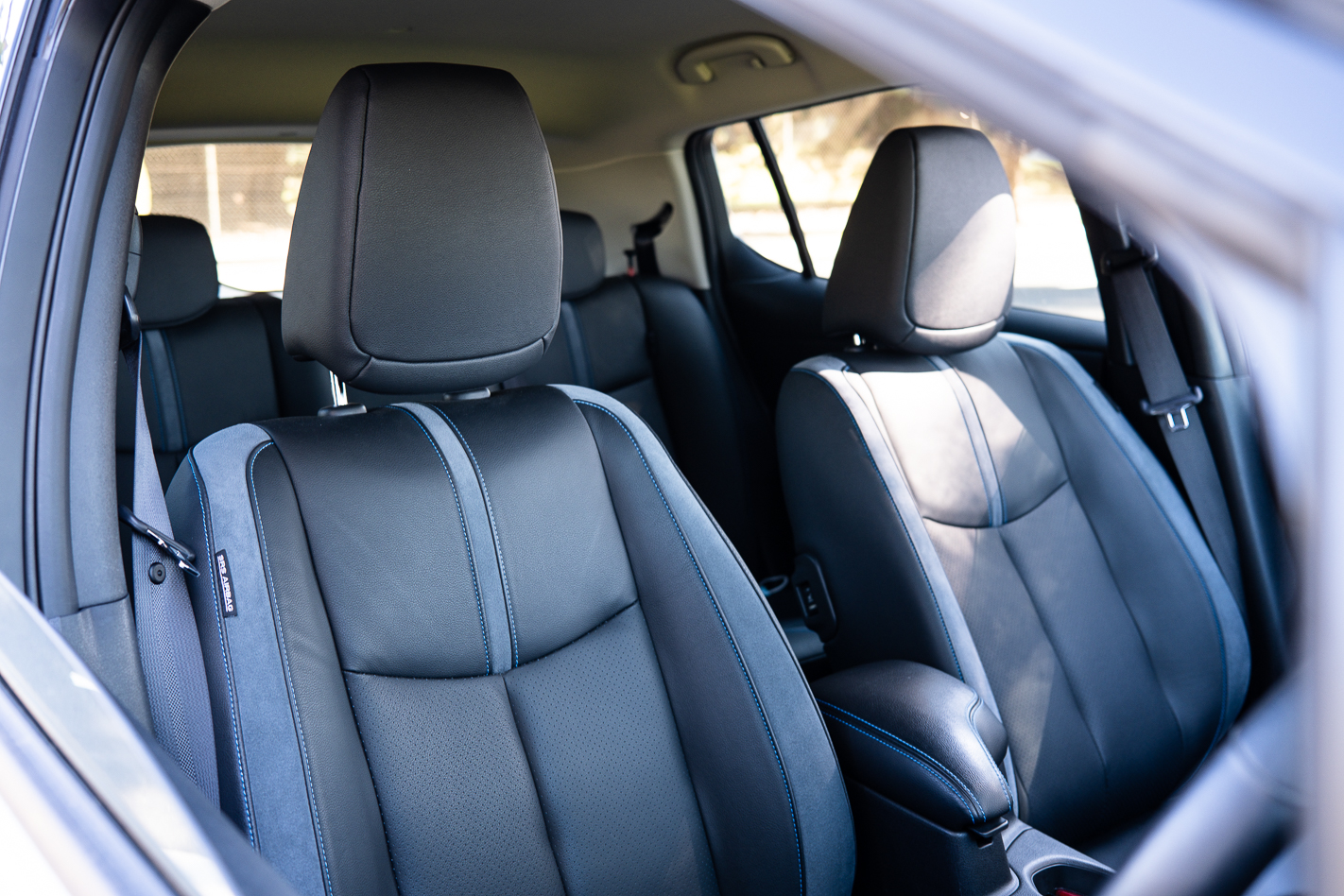
Seating is really comfortable – plush like an armchair – and there’s a good amount of knee and foot room in the second row. Nissan has come a long way with its latest infotainment system, in comparison to the primitive old non-touch affair. The maps are clear, the screens are attractive and the connectivity is intuitive. The Bose surround sound system is a good one too.
Next month I’m hoping to get out for a more substantial drive. Wish us Melburnians luck as we meander our way out of lockdown 2.0.
Update #3
Date: November 10, 2020 ODO: 4069km Km driven: 556km Fuel consumption: 16kWh/100km
Hey, we finally did it – we can now travel further than 25km from home and for reasons other than popping down to the shops for milk and bread.
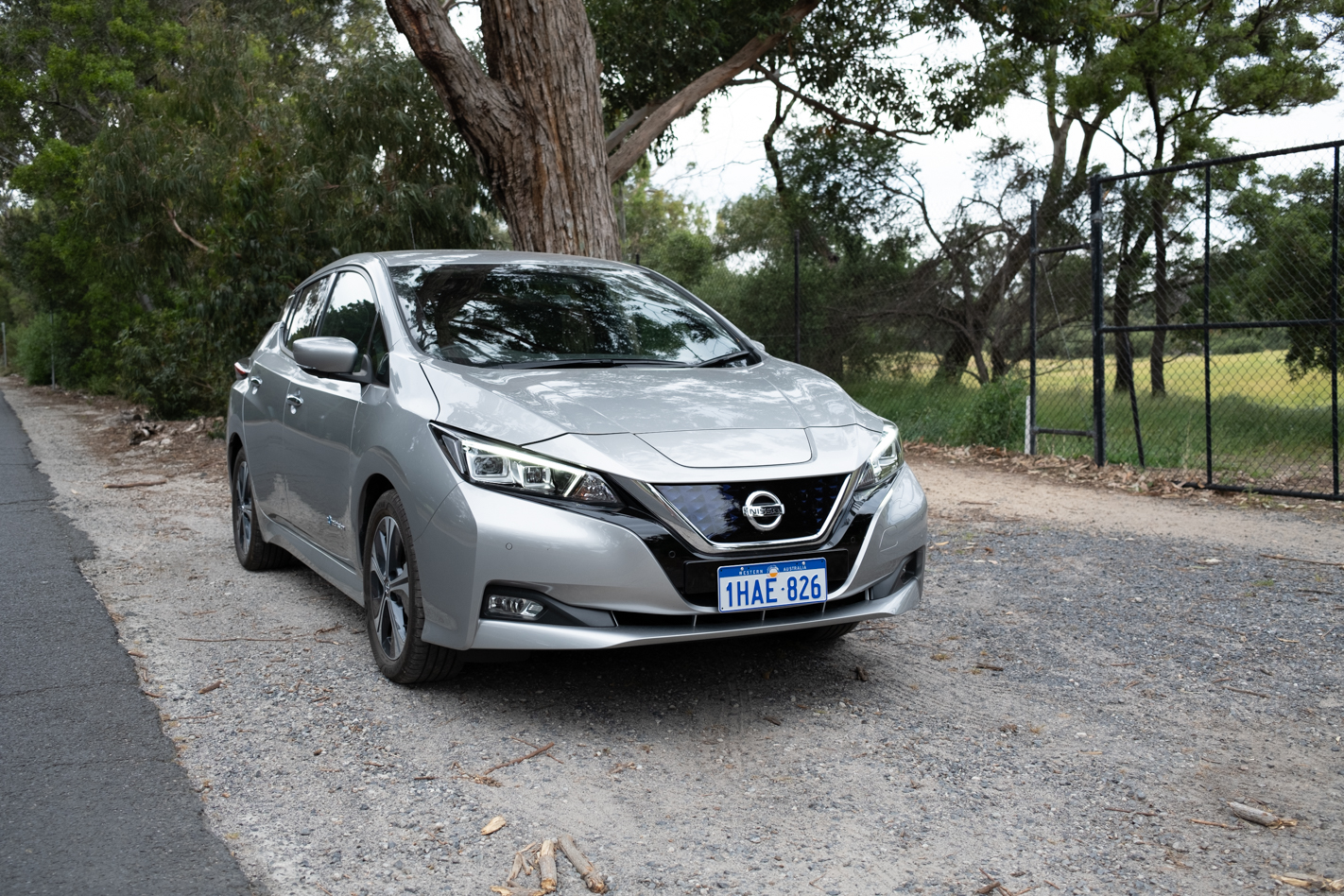
I’ve wasted no time in getting behind the wheel of the long-term Leaf, both the car and I needed to escape for a proper drive.
Now, normally, a Nissan Leaf wouldn’t be my first choice to take for a nice drive. But since I’ve enjoyed it around town as a runabout, I have wondered what it would be like to take further afield.

issan expects energy companies will pay EV owners for electricity
You wouldn’t go as far as calling the Leaf a hot hatch, but the acceleration and immediacy of torque is fun to deploy on a worthy road. The pace at which it accelerates is unlike any other regular hatchback, given there’s a respectable 320Nm of torque on offer, and a surprising sight to onlookers and passengers alike.
That said, you do have to be careful when leaning on the throttle as the tendency to torque steer is pronounced; and it loves cheeky wheelspin too.
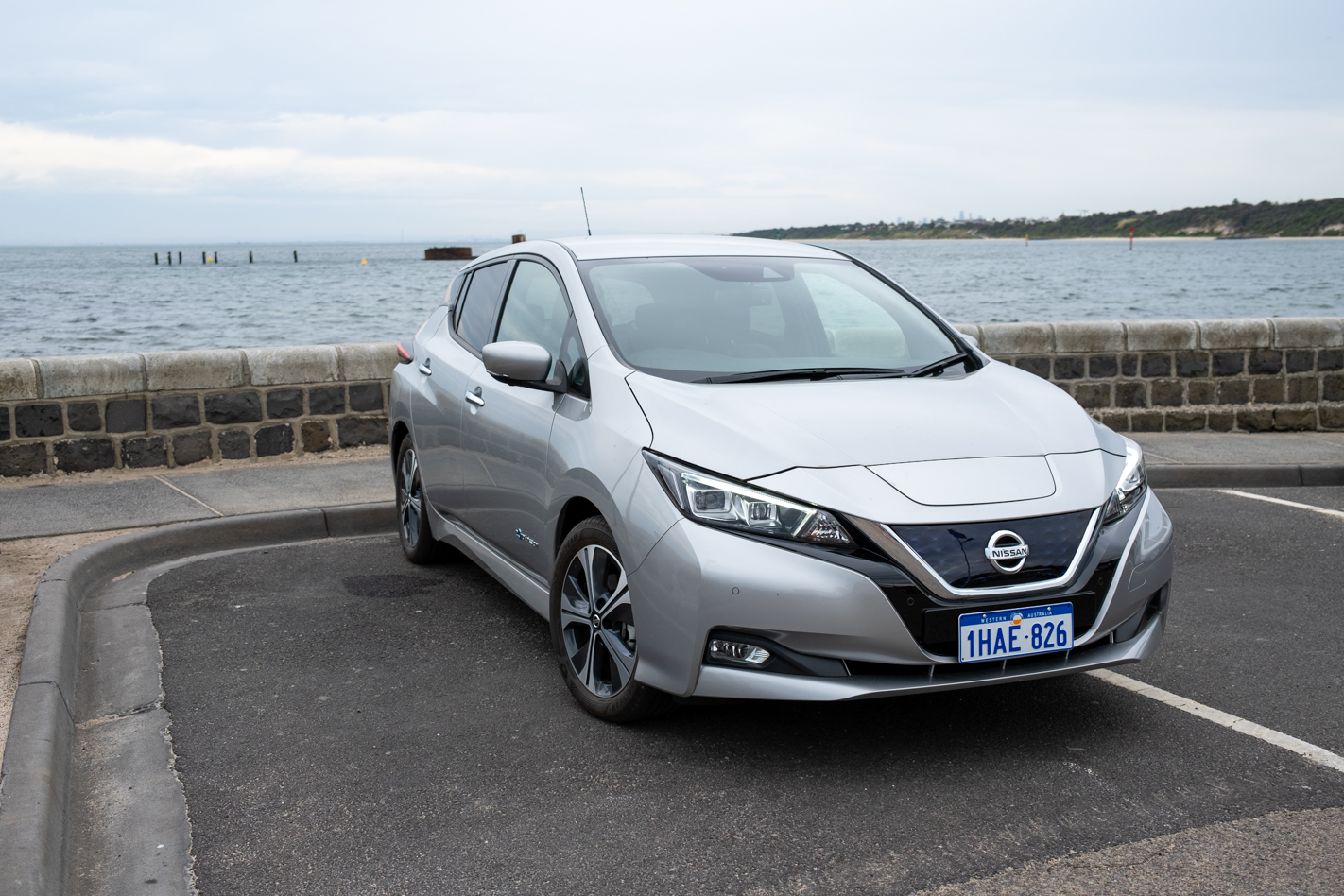
Its 1594kg weight was fairly well hidden around suburbia thanks to the eager motor, but further away from town on faster corners body roll becomes apparent.
I’ve got no real complaints to level at the Leaf’s ride, which is comfortable around town and smooths out most road surfaces. It can get tripped-up on some sharper road joins that can jolt the cabin.
In the absence of an engine’s noise, I expected there to be more road and wind noise to upset the ambience. However, the interior is well insulated from noise intrusions. For example, the Leaf beeps while it’s in reverse to alert pedestrians around you, but even that sound can be hard to hear from inside.
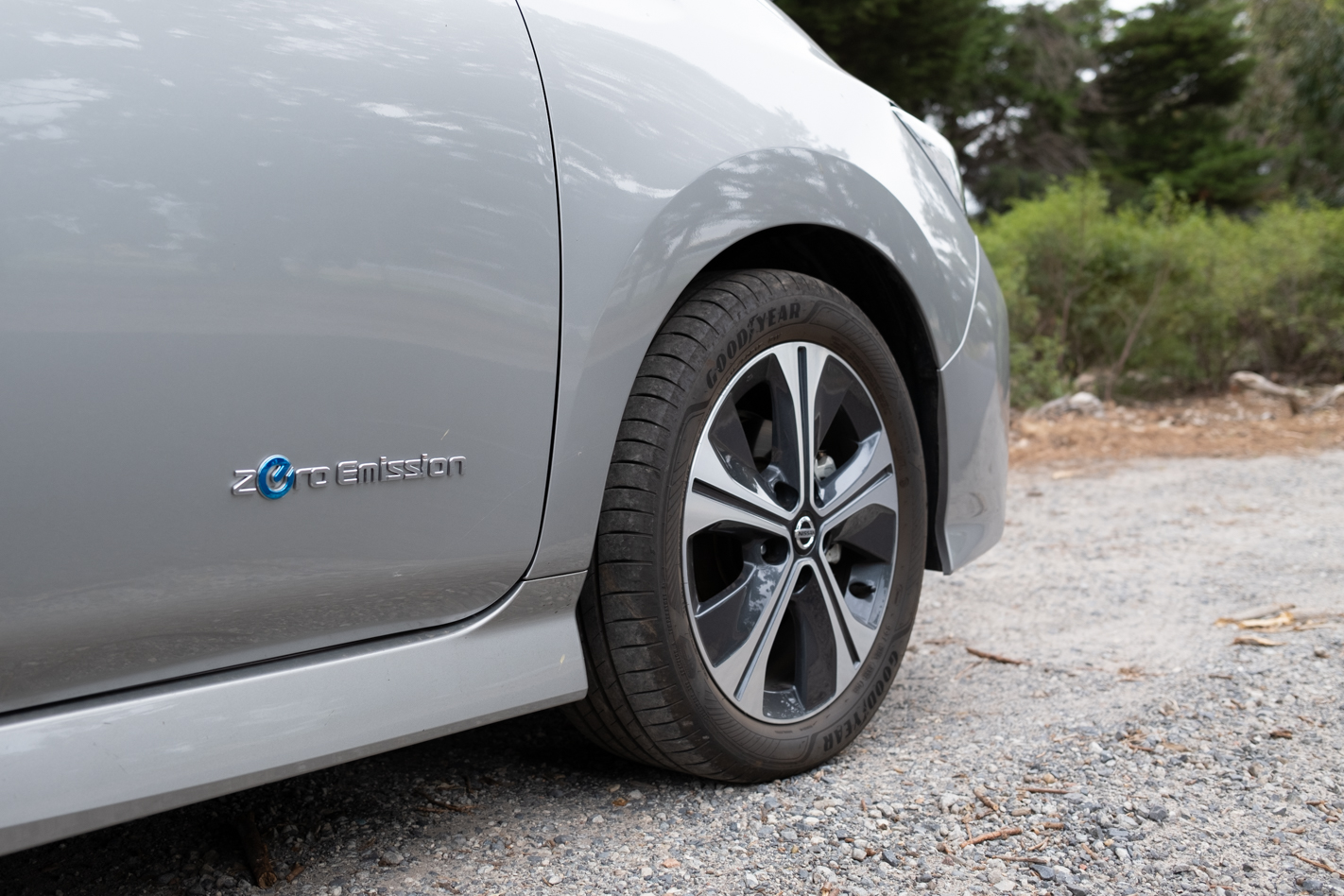
This month I had the chance to hook it up to a 7kW single-phase AC type 2 charger which did exactly as prescribed and charged the car to full in roughly six hours. One of these chargers costs between $1000-2000 depending on brand, and I’d definitely invest in one if I owned the Leaf.
There was one instance of range anxiety that caught me off-guard this month, albeit completely my fault. Because I’ve just been running it to empty before putting it on charge, it was low on battery when I wanted to spontaneously go out which rendered it useless. Lucky I have my own car. It was a reminder to be better prepared in the future, but not all people can arrive home and immediately put their car on charge.
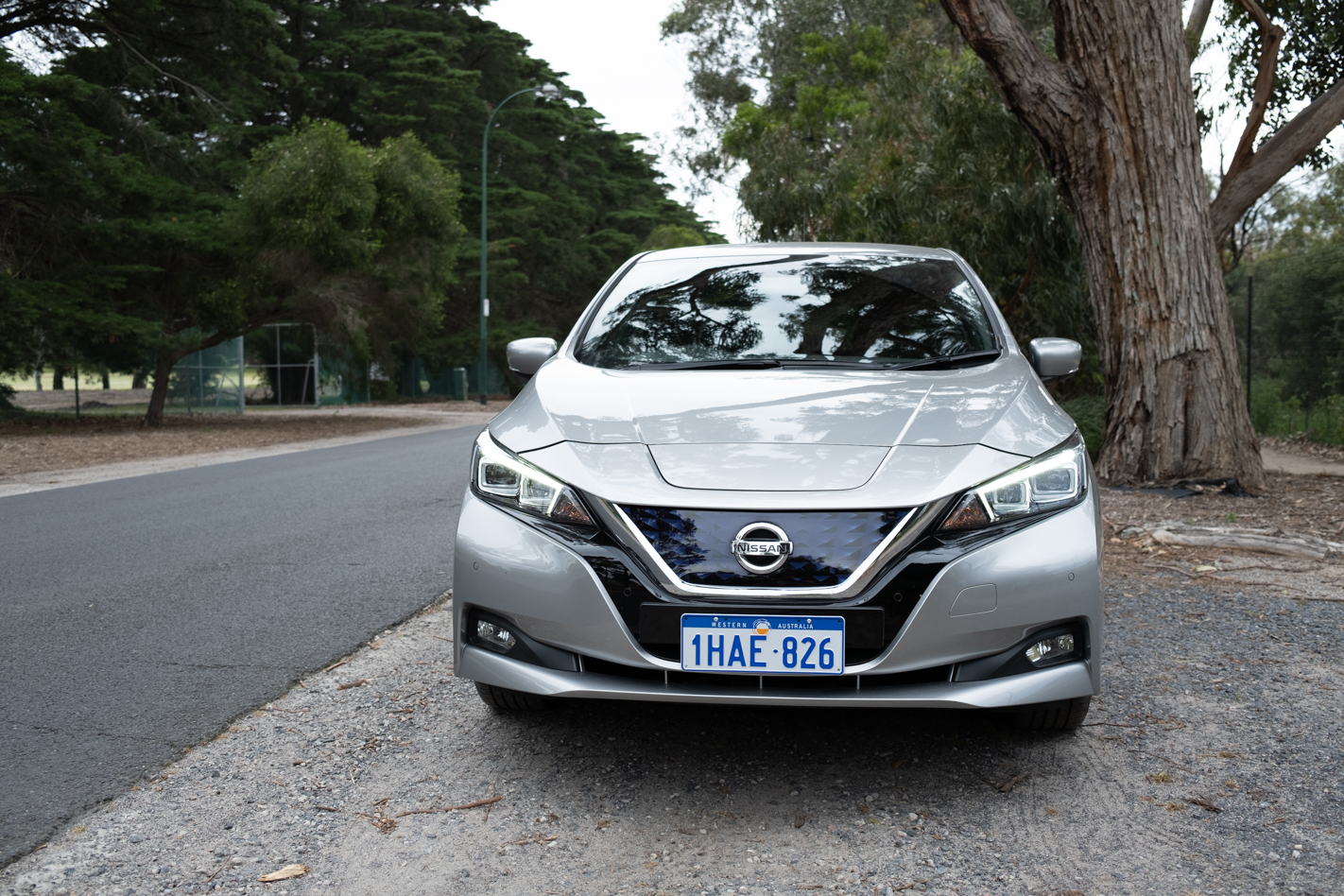
Next month, we’re going to keep working our way up the hierarchy of charging types and plug it into a 50kW fast charger. I’ll also look into whether vehicle-to-grid (V2G) charging has been switched on, something which was slated for late 2020 according to reports a few months back.
Update #4
Date: December 7, 2020 ODO: 4961km Km driven: 892km Fuel consumption: 15.8kWh/100km
It wasn’t planned, but this month, the time came to finally put ‘range anxiety’ to the test.
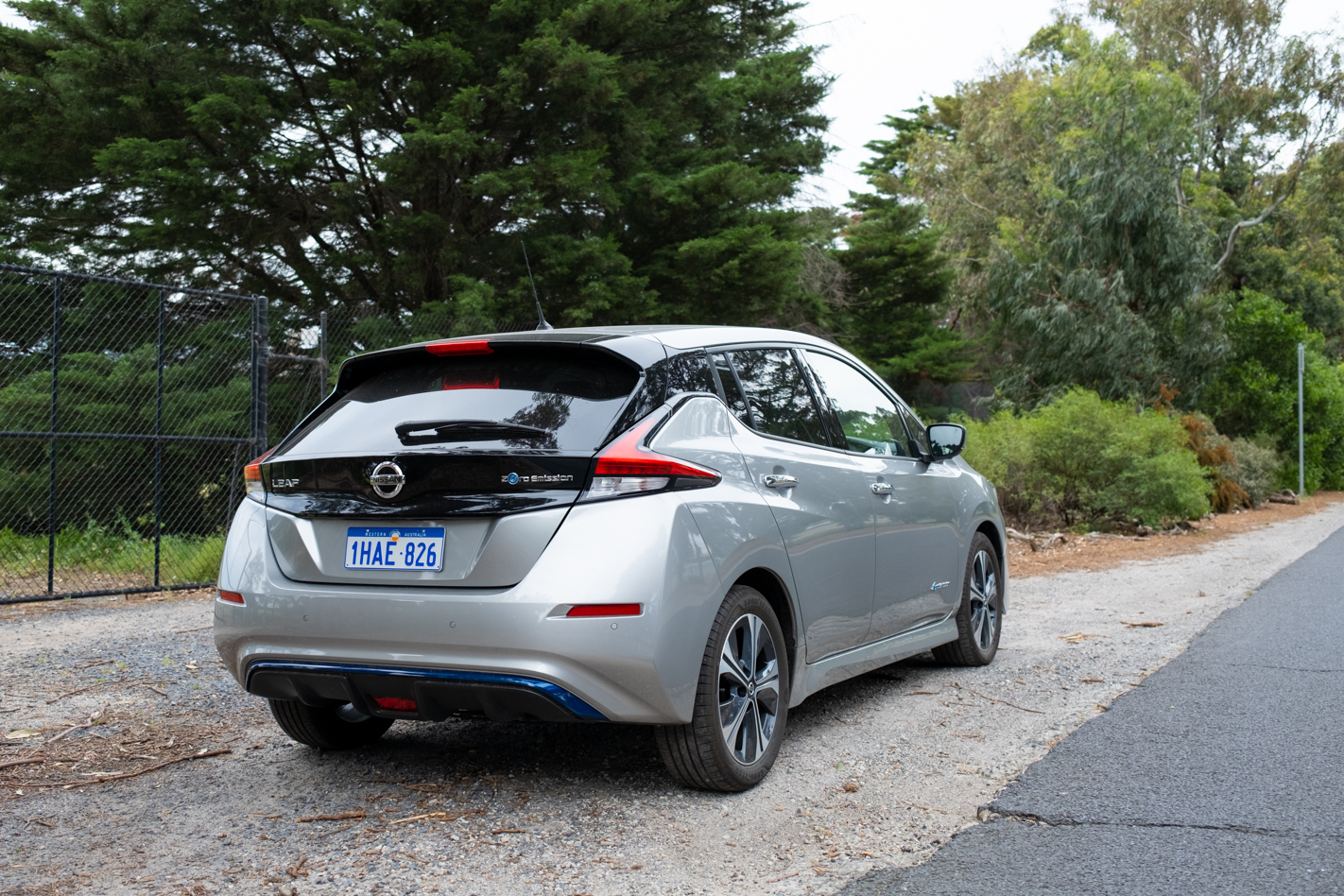
I received the call-up to attend this year’s Wheels’ Car of the Year event and it meant a long drive down the surf coast towards Anglesea, roughly 150km from home.
With the long-term Nissan Leaf’s theoretical 270km range, it shouldn’t have been a problem. But the thing with electric cars is that there’s no Plan B once you run out of power.
With that in mind, the night before the early start was a bit stressful, but I was determined to see it through and find out what it’s like to take a properly rural drive with the Leaf – the furthest it’s been from its city comfort zone.
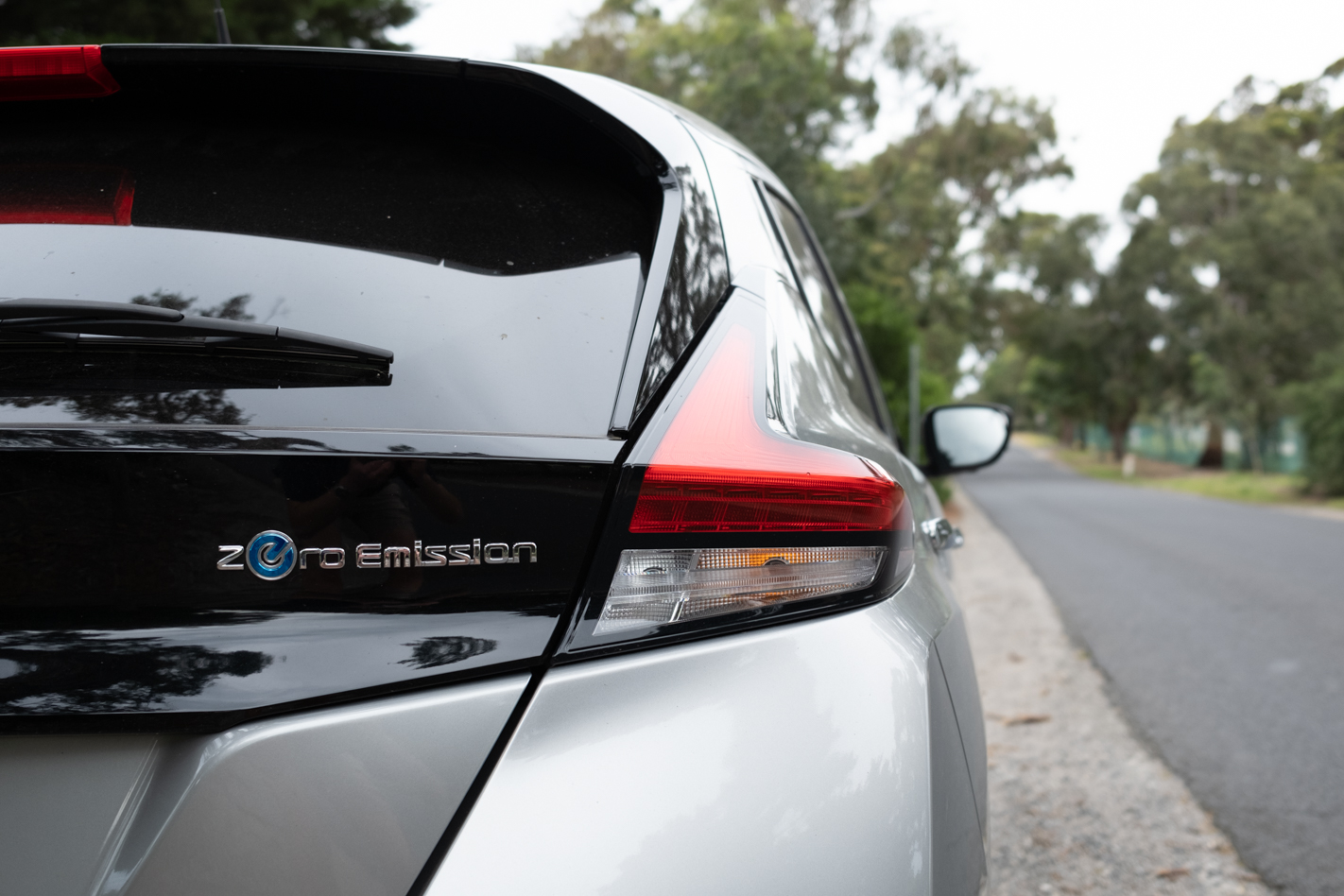
Giving myself the best possible chance, I did what Nissan suggests for longer drives and switched ECO mode on (which dulls the throttle response for more economical use of power) and engaged B mode, intended to deliver more regenerative braking. There’s also an e-Pedal function, which uses heavy regenerative braking and is designed so the driver can use just the one (accelerator) pedal to drive the car.
The e-Pedal does take some getting used to – as soon as you let off the accelerator the car starts braking. But it does help range anxiety by banking extra kilometres through regenerative braking.
For good measure, I restrained myself on the climate control front giving myself an extra few kilometres of range.
You can see the estimated range change up and down in real time as you make these amendments. I managed to get the Leaf’s figure just above 300km, which is 30km beyond the claimed range.
Freeways are a kilometre killer in terms of range, as there’s less chance to recoup charge through regenerative braking. A detour out towards the airport to collect equipment – and the obligatory Macca’s pitstop – didn’t help my cause either, but soon enough the range started dropping faster than I was travelling.

By my calculations, I should have arrived with an estimated 120km left in the battery, but after succumbing to turning on the air conditioning I wound up arriving with 50km left on the clock.
It’s normal to lose more range than you expect with an EV, especially if you’ve got a heavy foot and aren’t getting the benefit of regenerative braking. But a real-world journey of 170km is about as far as I’d want to travel in the Leaf.
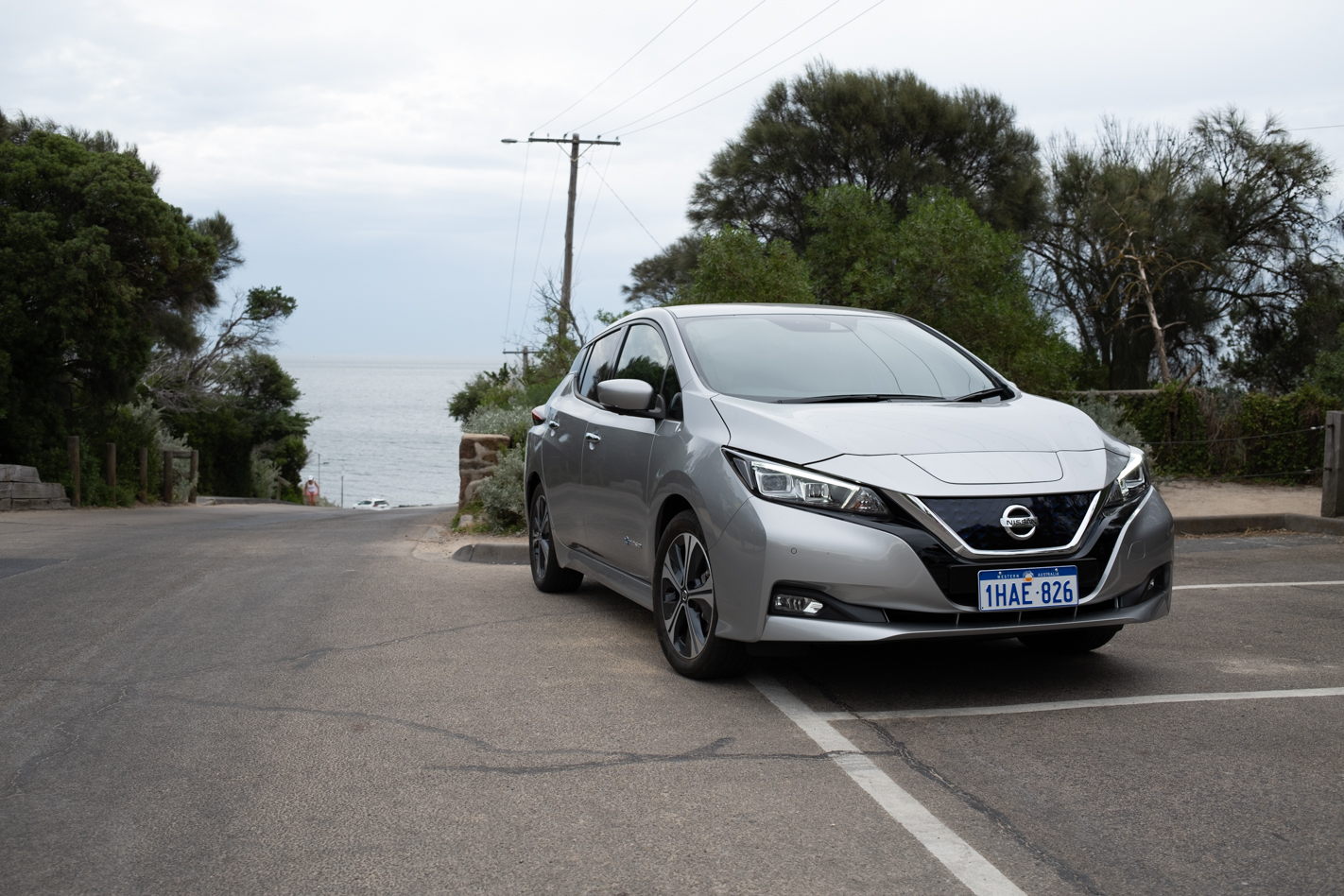
On arrival, the Leaf went straight onto a type 2 charger and got back up to 100 percent capacity in about six hours, before sitting idle for the week that we were at Car of the Year.
The drive down was pleasant. It was quiet, the Bose sound system got a great workout and the Leaf took care of me just like any car would.
Adaptive cruise control took charge most of the way, and only tripped up once where I wasn’t certain it was going to stop in time behind traffic, leading me to take over. It was a minor hiccup for an otherwise competent system.
Its instantaneous acceleration definitely feels more impressive around town than out on the open road, though. It does have enough get up and go to overtake swiftly, but it does have to be timed correctly.
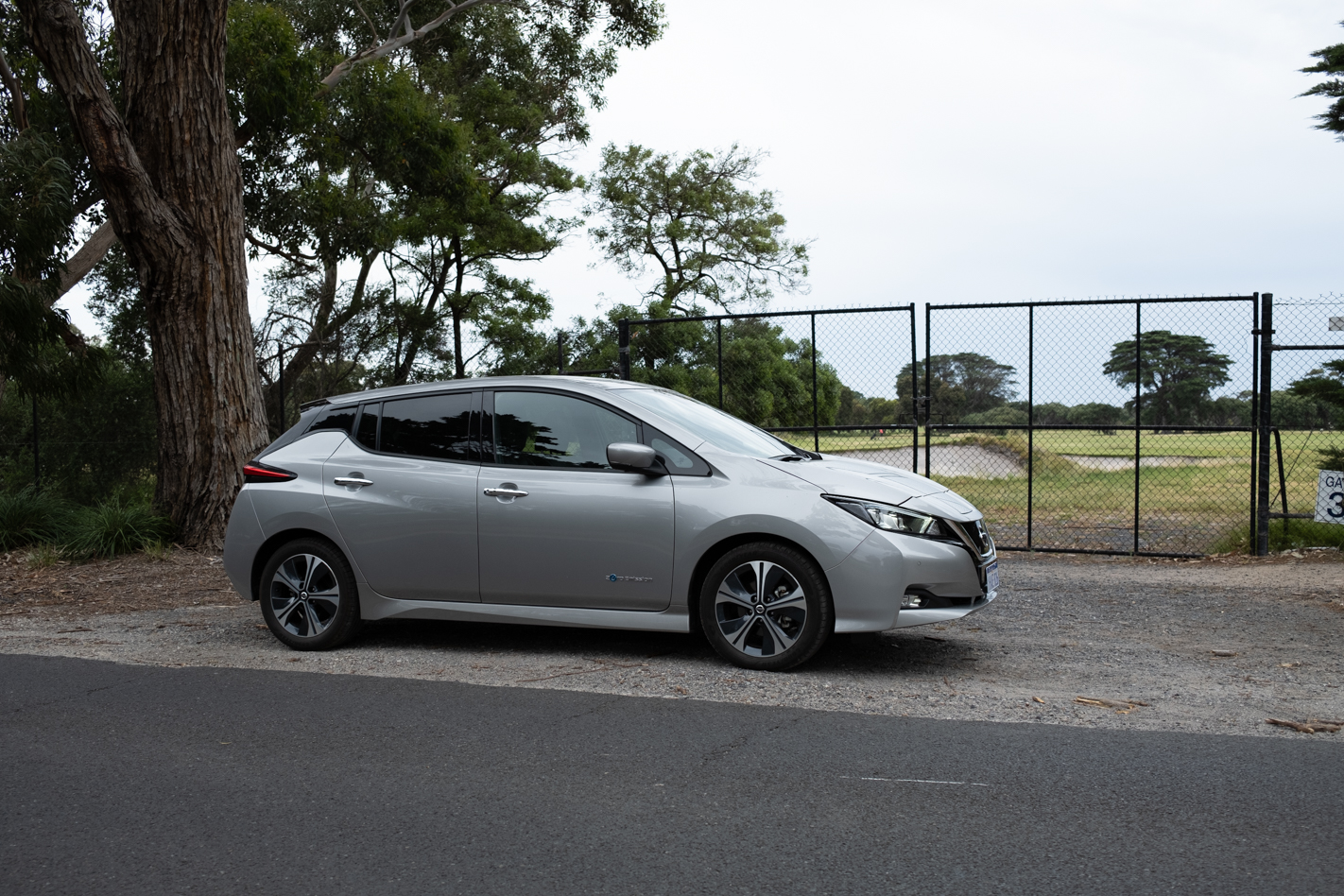
The ride was as comfortable as I’ve come to expect after living with the Nissan Leaf over the past few months. Bump absorption and rebound control were very impressive on the freeway and it even managed a gravel road stint decently.
Returning home was much less of a worry, with the benefit of hindsight and experience going a long way to allay range anxiety fears.
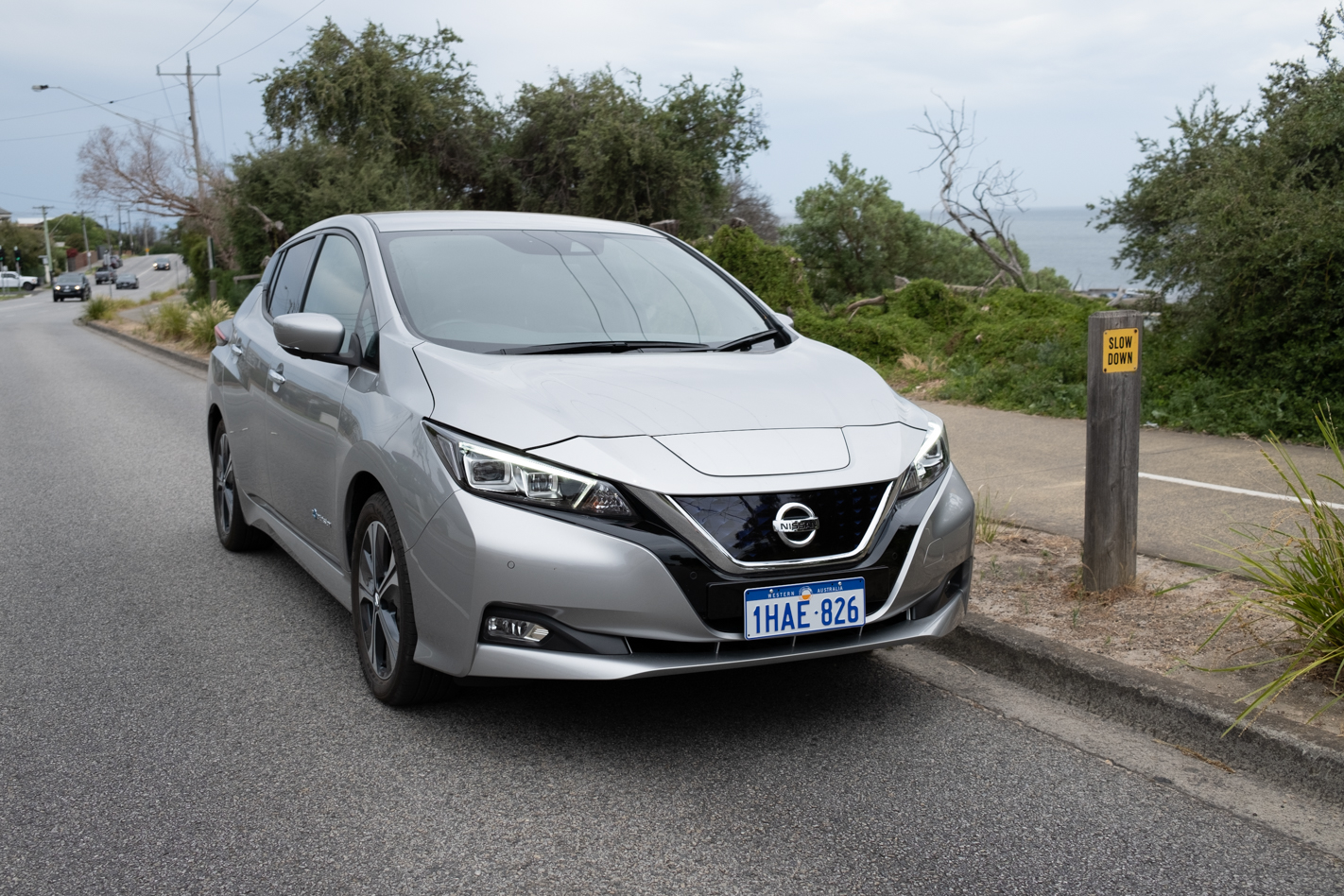
Our time with the Nissan Leaf is nearing its end, with it due to return to Nissan HQ just before the end of the year.
That said, I’ve got a few missions still to level at the Nissan Leaf before it leaves our custodianship.
Update #5
Date: January 14, 2021 ODO: 5190km Km driven: 229km Fuel consumption: 15.8kWh/100km
After spending near-on four months with the Nissan Leaf, where does that leave me on electric vehicle ownership?
It’s a debate I’ve been having with myself ever since handing it back to Nissan at the end of December.
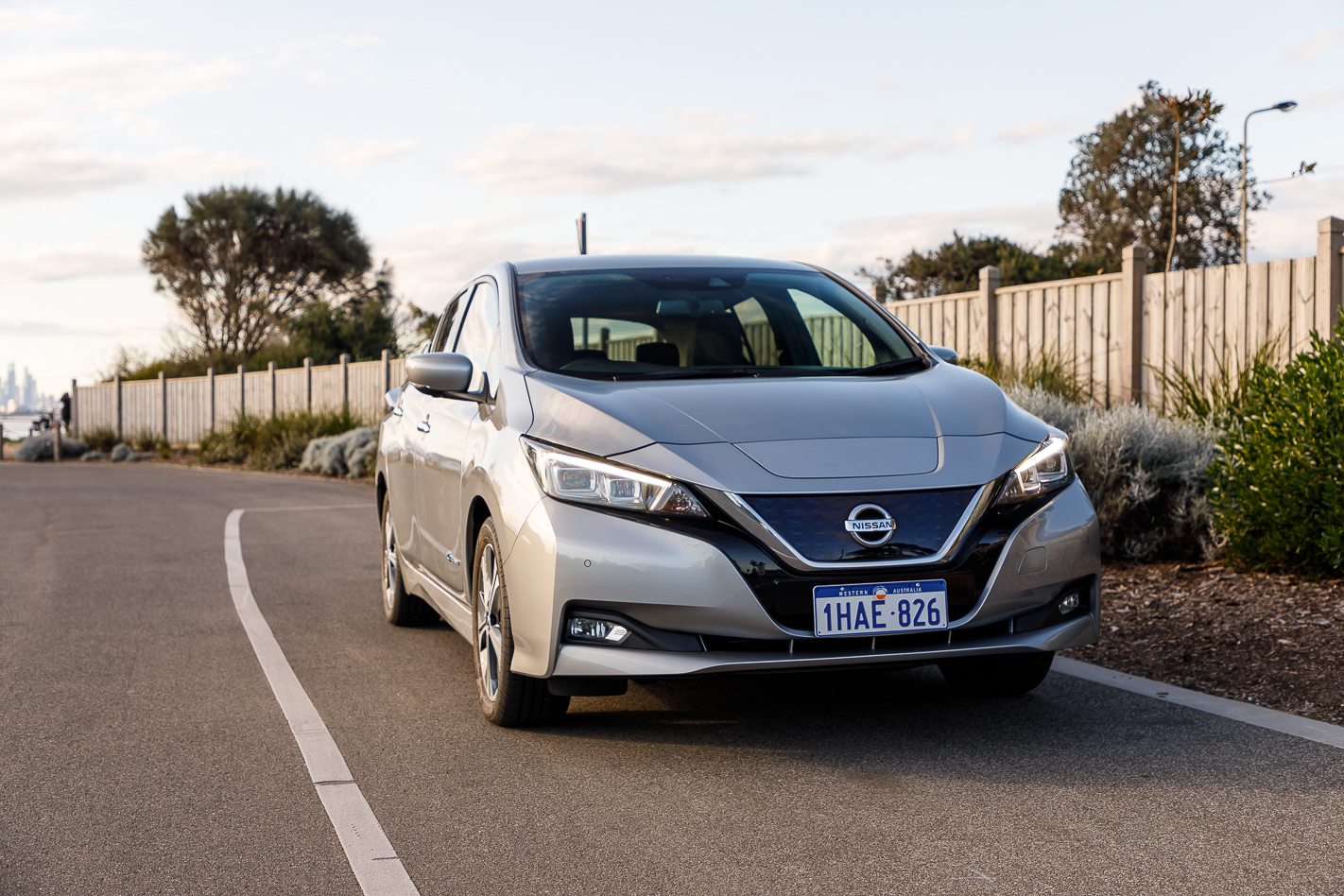
If they weren’t as expensive, proper charging infrastructure could be relied upon and they had longer ranges – electric vehicle ownership could be more of a reality in the near future for many of us. But those are some pretty significant barriers to entry, some of which will take government intervention before they’re overcome.
A massive perception problem still remains in Australia, too. I was poked-fun at by mates for driving around in the Leaf and we often get negative comments on our Facebook page when posting about EVs. While it’s mostly in jest, it shows that we’ve got a way to go before more people jump onboard – and it feels like other countries have got there quicker than us.
But, at the moment, early adopters aren’t buying electric vehicles because they’re cheap, are convenient or to go long distances. They buy them with climate change in mind, or because of how they drive, or even how they look.
This subset of the general public accept the price premium and pitfalls of the burgeoning tech and with that in mind, and judged against other electric cars like the Hyundai Ioniq Electric and Mini Cooper SE, the Nissan Leaf is a fantastic representation of what electric vehicle ownership can be like.
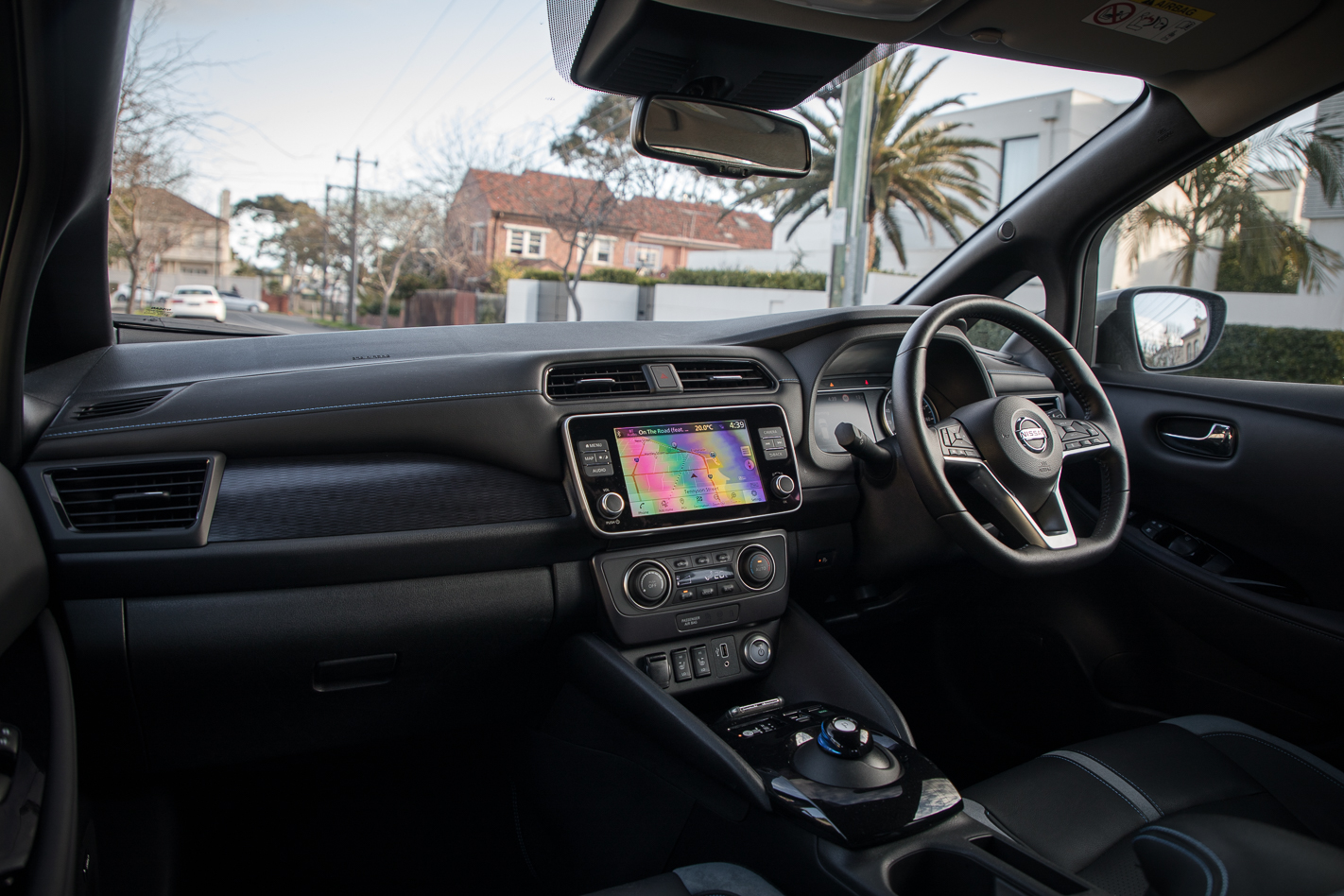
We tested the Nissan Leaf against its $48,990 Hyundai Ioniq Electric rival at the start of last year and although the Leaf is more expensive at the outset, it features a more useable range (270km vs Ioniq’s 230km), sports a more powerful drivetrain for that trademark EV pace and feels like a more purposeful electric car than the Ioniq. It won that comparison and it’s an assessment that I can back up after running the car over a longer period.
It’s $49,990 price point makes it one of the more affordable electric cars, which is already a plus for anyone looking to make the jump, but it was also comfortable, packed with amenities, featured a good infotainment/sound system and remained perfectly dependable throughout our loan.
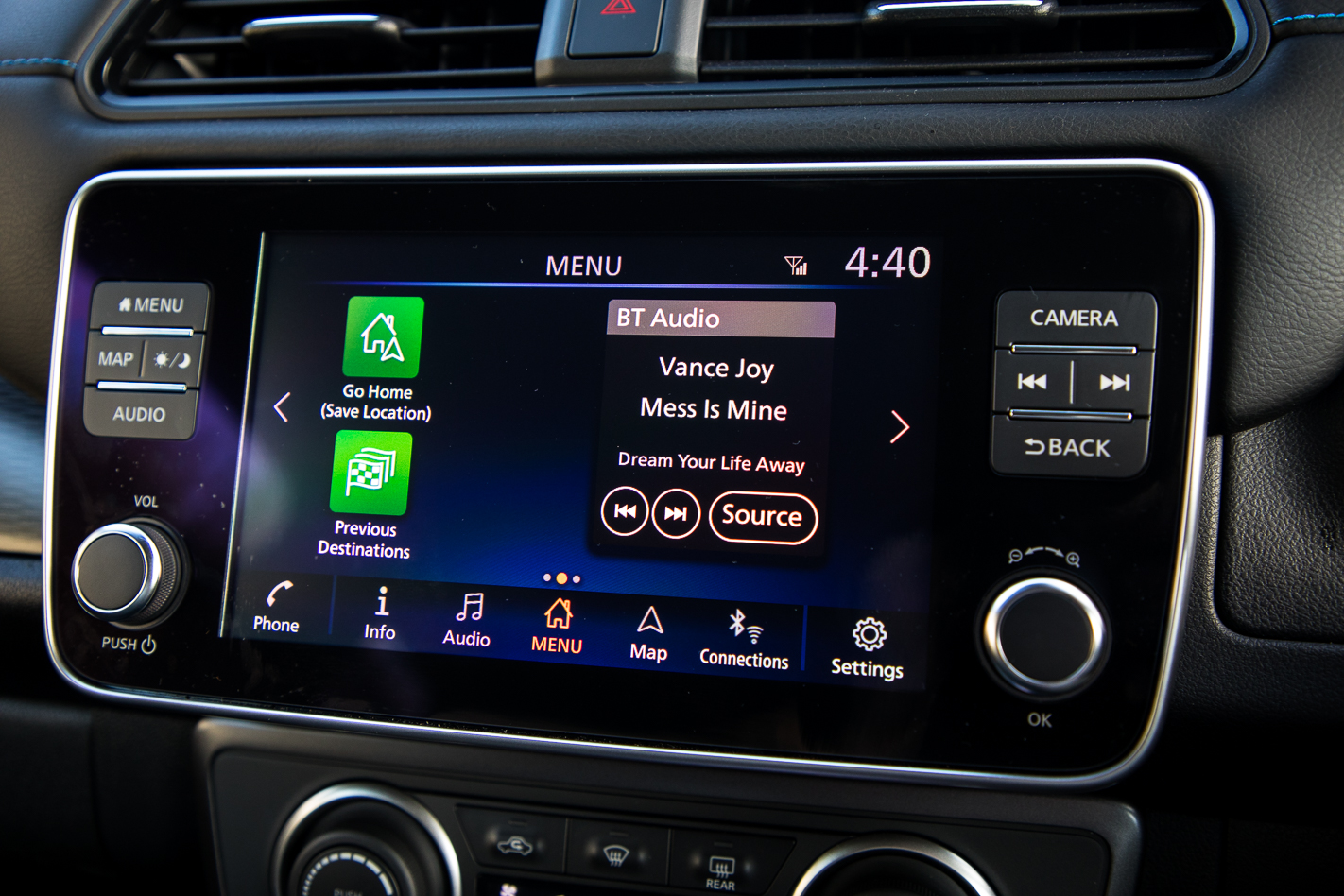
Drilling down further, there’s space enough for a young family with good room up front and an acceptable space behind for shorter adults and kids, a number of handy storage ports for water bottles, a neat phone slot in the centre console (though the omission of wireless charging is a miss) and other nooks and crannies for loose items too.
There’s less space for bits and pieces in the second row. A map pocket in the back of the seats is about the only storage space and there’s no rear air vent either. The hump where the driveline tunnel would normally be is an unwelcome intrusion for second row dwellers.
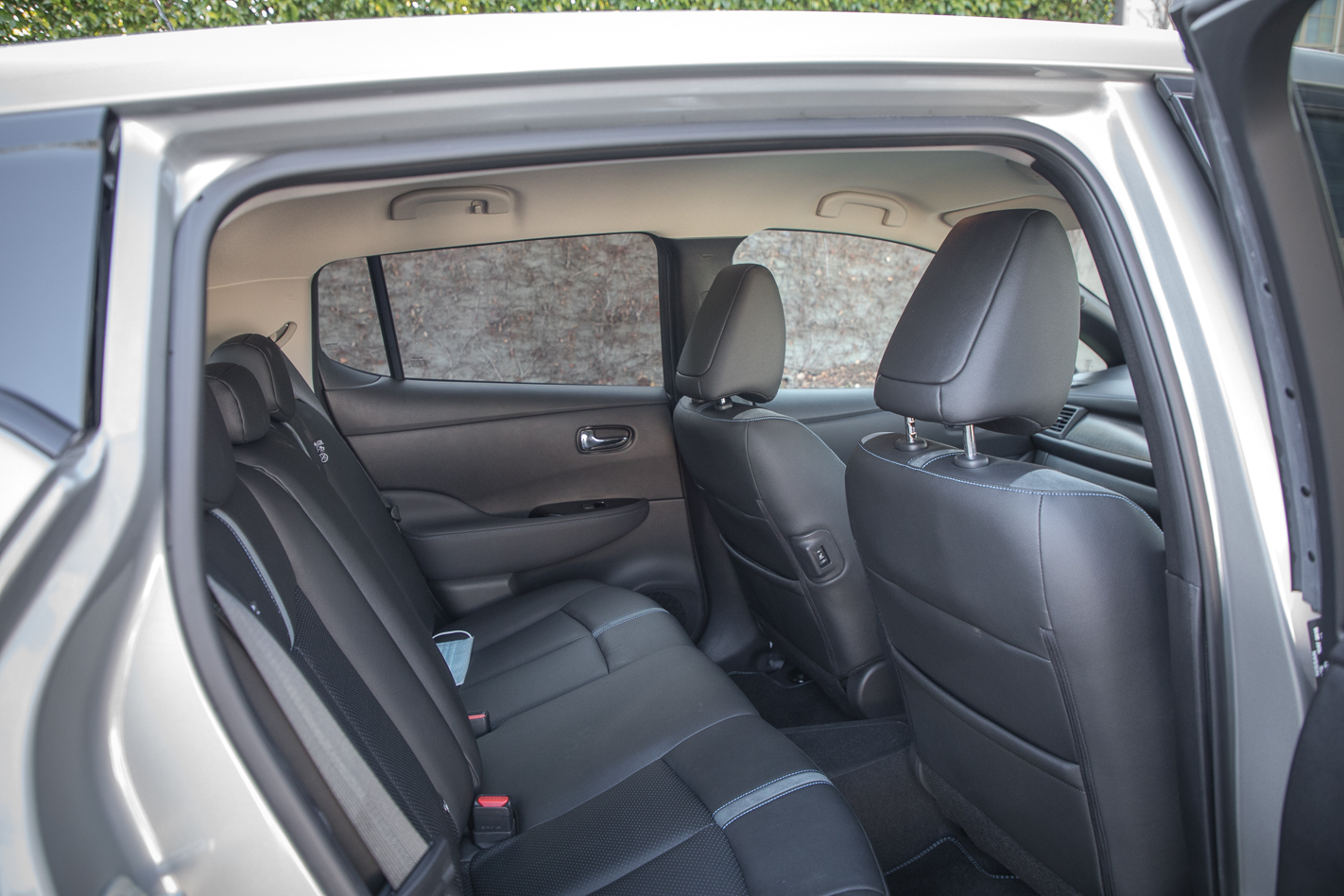
While storage is fairly well catered for in the front cabin, fitting items in the boot is a bit of a chore – especially if they’re large. It sounds large enough on paper – 405 litres. But not only is there a great big subwoofer unit placed annoyingly in the middle of the space, the boot opening aperture is small and the second row of seats don’t fold flat making it difficult to slide in big items.
Even so, I managed to make it as comfortable a space as possible after having reversed it up to the big screen at Coburg drive-in cinema. The Bose sound system deserves a special mention for its theatre on that test, too.
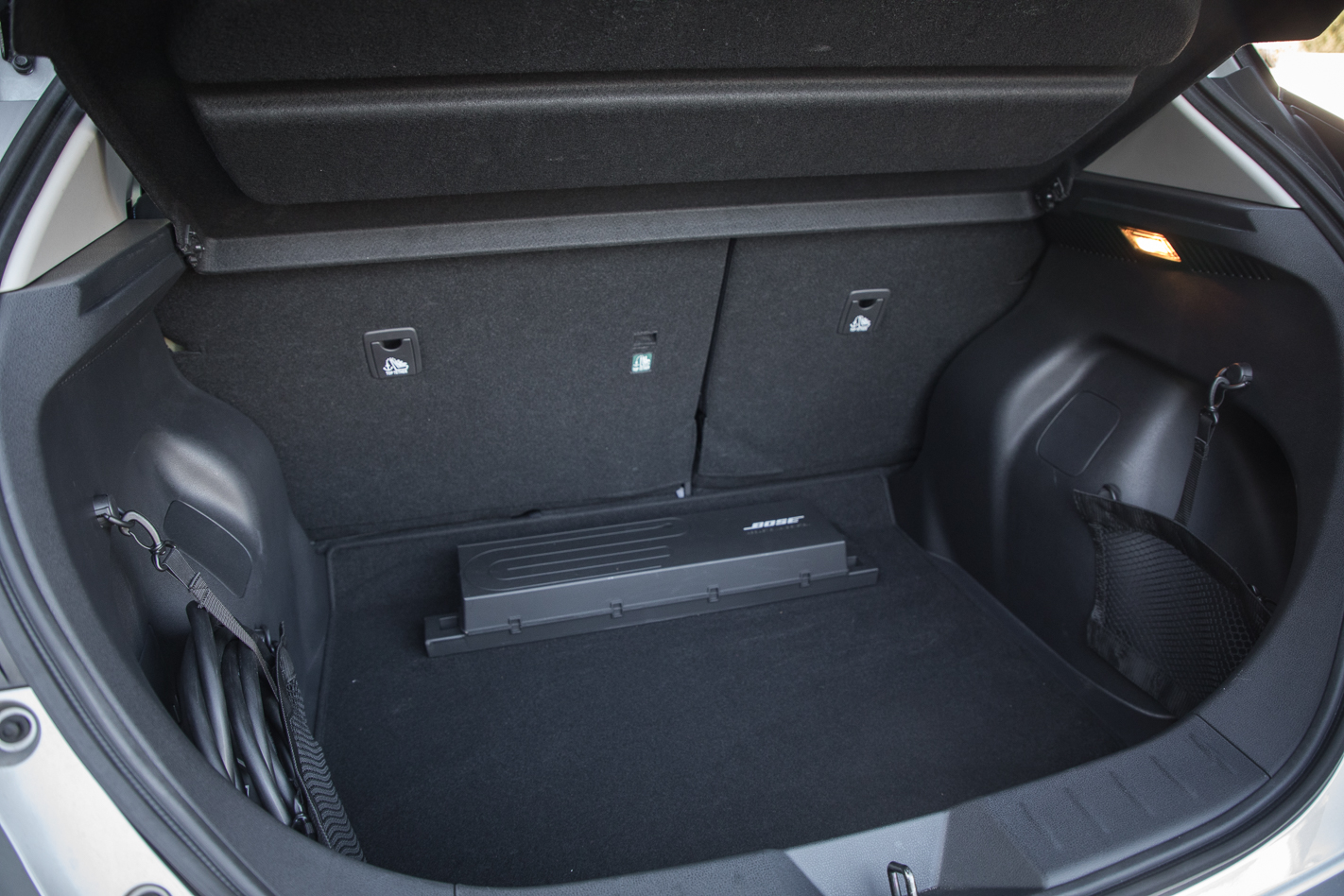
Tech-wise, as mentioned in previous reports, Nissan has come a long way in this department. Navigating the menu systems is simple and there’s a good amount of customisation you can do to get your home page setting just right. It also tells you how fuel-efficient you’re being, includes a number of vital readings like battery temp, remaining charge time and it’ll even direct you to the closest charging station.
The fast-connecting Bluetooth set-up and digital radio was a go-to for daily errands, though wired Apple CarPlay is always on-hand for a plug-and-play solution.
Nissan Intelligent Mobility describes the Japanese car maker’s roadmap towards the future of driving. In practice, the broad term encompasses a number of driver assistance safety measures including autonomous emergency braking, active cruise control, lane-departure warning and rear-cross traffic alert.

I’ve already spoken about the active cruise control which, apart from excluding a stop and go function for traffic lights and won’t steer you within your lane like some other systems, is a competent and assisted way to travel on freeways.
In my experience, the other technologies like rear-cross traffic alert and autonomous emergency braking were all helpful in alerting me to potential mishaps.

The Leaf’s e-Pedal is another Intelligent Mobility setting which turns on heavy regenerative braking, negating the need for a brake pedal. It works really well and genuinely adds kilometres onto the car’s range figure, though it is a matter of personal preference whether you like the feeling or not. I opted to go without it for much of my driving, unless I wanted to be conservative with the Leaf’s range.
A further enhancement of Nissan Intelligent Mobility for Australia would see the introduction of ProPILOT PARK, which can autonomously park the vehicle and is available on Leafs in other markets like Japan.
At odds with the futuristic mindset of the Nissan Leaf is a foot-operated parking brake.

Another thing that could make life easier is a phone app that could tell you key vehicle stats and levels. For example, the amount of battery charge remaining. A few other manufacturers incorporate this technology and it looks as though Nissan has attempted it in other markets, but there’s nothing of the sort for Australians with a Leaf.
More charging stations are always welcome. In my time with the car, I only ever came across one 50kW DC charger and that’s because I specifically set out to charge there.

Running an electric car does force you to think in advance about where your next charge is going to be, which doesn’t bode well for spontaneous trips. That only stung me a few times but does prompt you to ensure it’s always on charge when at home.
Luckily there’s a long-range Leaf e+ touching down in Australia (expected to add $10,000 to the Leaf 40kWh’s $49,990 price) in just a few short months which is offers 100km extra range from a bigger 62kWh battery.
It’s refreshing to see Nissan doubling-down on its EV efforts when rivals like Renault are pulling the Zoe out and, not to mention, a lack of investment from Federal government.

While I wouldn’t be swapping petrol power for electrons exclusively just yet, having a backup internal combustion engine car to an EV daily driver is the happy medium for me right now.
For one thing, the technology excites me and while electric vehicles might not be the answer for every person right now, we are on the right track.



